by Peter Gow
Is that school worth it?” As a career independent school educator, I tend to find this question both annoying and provocative. Often enough the inquirer is looking at astronomically high tuition and wondering about economic factors that I, as a teacher working daily in what William Faulkner called “the agony and sweat of the human spirit,” like to dismiss as superficial and beside the point—mypoint, anyway.
But this is in fact a perfectly legitimate question, extending even to per-pupil expenditures in public schools. Even so, from my peculiar perspective I like to look at the value of a school or an education as an expression of something deeper.
American independent schools have a kind of split personality. On the one hand, they are often (and often correctly) regarded as existing to have fostered and preserved the separate status of socioeconomic elites, while on the other—seemingly antithetically—many of them espouse missions and values that stem from faith-based or socially progressive principles of service and personal responsibility. In the past half century, in fact, the great majority of independent schools and their faculties have worked very hard to break down barriers to attendance and to enact principles of inclusivity as an aspect of leaning into the discomfort of reconciling generous and meritocratic ideals with sometimes exclusive and haughty heritages.
Independent schools are not monolithic. If Chairman Mao had been around to encourage educators in the late nineteenth century to “let a hundred flowers bloom,” he could not have anticipated the philosophic, programmatic, or demographic range of the schools that now comprise the membership of the National Association of Independent Schools (for example), the main membership body of the “industry.” Day and boarding, single-sex and coed, specialized and general, elementary and secondary, independent schools vary one from another in ways that startle outsiders and can even confound industry insiders.
As the economy slows, it is not surprising that independent school leaders have begun to consider their position as a market sector and to think in ways that mirror the anxieties of for-profit businesses about ways to sustain institutional viability, from marketing to classroom practice. The phrase “value proposition” pops up frequently: what it is that makes independent schools, or a particular independent school, worth the price of enrollment.
Much discussion of “value proposition” has focused on real dollar factors and those elements that independent schools have misguidedly allowed to exist as proxy measures of quality for generations: next-school and college admission lists, athletic successes, sheer wealth. As prestige factors, such measures (which in fact frequently reflect selective admissions rather than strong or innovative programs) divert attention from, or offer parallel and sometimes contradictory messages to, the robust and inspiring statements of beliefs, values, aims, and aspirations that schools earnestly offer up and that provide the framework on which faculties and administrations work hard to build their schools as places to live, learn, and work.
Suzy, in other words, may attend Lofty Breezes Academy because her parents see the school as providing a route to a selective college and a successful career, but the staff at the Academy sincerely understand themselves to be engaged in delivering programs and policies that will help Suzy develop as a person in all the ways defined in the school’s lovingly crafted mission statement and the legacy values embedded in the mottoes and exhortations heard regularly in its assemblies, classrooms, and on its playing fields. A student’s career at Lofty Breezes, then, is both an instrumental investment in her material future and a metaphysical (and less easily predicted or assessed) investment in her character and personal development.
Many independent schools struggle to align these aspects of their raison d’etre and to build brands that reassuringly accentuate the instrumental while giving adequate expression to the metaphysical. Nevertheless, from the outside the instrumental side tends to prevail, and schools and their marketers customarily rely on the old assumption that college lists tend to trump stories of personal transformation.
I believe that the real value proposition of an independent school can in fact be formulated, communicated, and even in some ways measured in ways that shift the emphasis from instrumental and superficial prestige factors toward the real work that schools, and those who work in them, aspire to do.
In my somewhat simplistic formulation, I see the aim of any school as first to build up—I like the old-fashioned work “stoke”—students’ capacities in a wide range of undertakings and activities: intellectual, social, spiritual, creative, physical, and above all exploratory. Second, the school must find ways to extract from students engaging and developmentally appropriate expressions of these growing capacities. Third, the school must endeavor to instill in its students habits of mind, heart, and behavior that will make both the “stoking” and expression of capacities permanent, automatic, and independently driven (autonomic, if you will) aspects of students’ characters—in their relationships, careers, and civic and community lives. For independent schools, their multifarious missions, values, and cultures must palpably inform the process by which these aims are achieved; a school’s “value proposition,” in a nutshell, is the degree to which it achieves them.
The success of a school in accomplishing these three aims is going to be measurable in stories—stories of growth, stories of success, stories of challenges and even failure. Truly successful schools will publish college and next-school lists that reflect the wide variety appropriate to institutions dedicated to supporting individuals in becoming the best possible versions of themselves. Parents, graduates, and faculty should be able to tell stories that cohere around the achievement of the overall aims and that are richly flavored by the specific aspirational values of the school.
One thing that this concept of value proposition requires is that schools be clear and explicit in propounding their aspirational values. A school must be able and willing to state boldly what it stands for, and then it must use this statement as a touchstone for developing and implementing all of its programs, policies, and practices. It must then not be shy about asserting the ways in which students grow, and are transformed, around these values—using corroborative evidence in the form of stories, images, and factual information.
A school that is “worth it” will have no trouble producing such evidence and in telling varied and compelling stories that make its value proposition clear and concrete. For many schools, this will require some risk-taking—stepping away from traditional and conventional ways of asserting their value (ways for which it is becoming harder to make the case, anyway, with ever-stiffer competition for everything from selective college admission to guaranteed athletic success to fundraising).
But I’m not here to talk about marketing but rather to remind myself (and of course my readers) that values, when we are engaged in the work of education, have to be the foundation of value.
I would emphasize, incidentally, that independent schools haven’t cornered any market on values or values-based education; I’m simply writing from the world I know best. I’m guessing that here aren’t too many schools out there, in any sector, that this concept of “value proposition” wouldn’t fit just fine.





